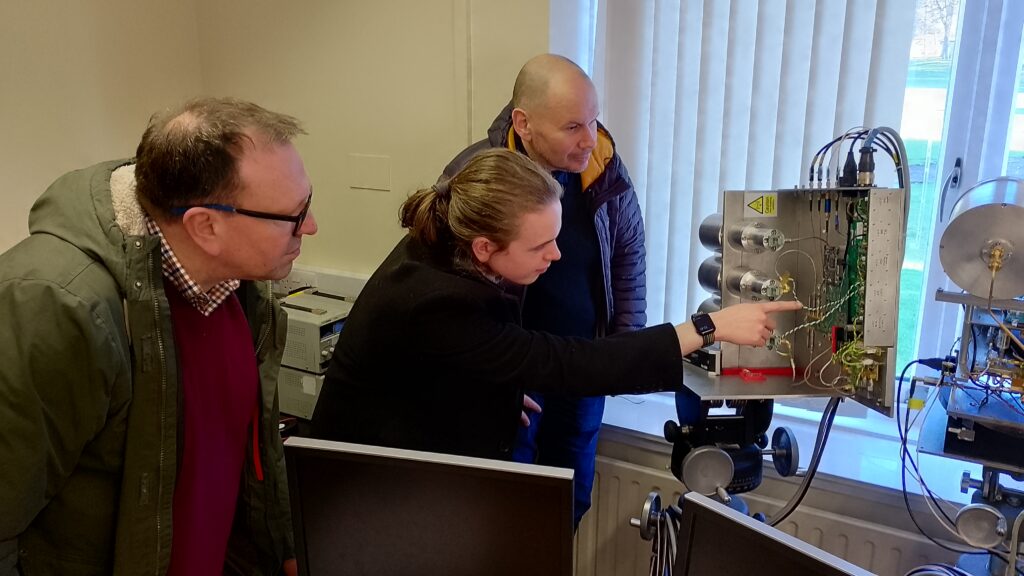Leonardo industry mentors visit University radar test laboratory
Industrial supervisors from Leonardo UK, one of the UK’s leading aerospace engineering companies and one of the biggest suppliers of defence and security equipment to the UK MoD, recently visited their mentee PhD student Mark Bell, to review his progress on ground-breaking new research into radar surface mapping techniques.

Dr David Greig (left) and Gary Mason (right) of Leonardo being shown the experimental radar being used by PhD student Mark Bell (centre) at the radar test laboratory at the University of St Andrews’ Observatory.
Interferometric Synthetic Aperture Radar (InSAR) is a radar technique used to create digital maps of terrain from a moving platform. Until now, this technology has been successfully deployed by Leonardo in the UK using airborne transport. However, Mark has identified an opportunity to transfer this proven capability to a ground-based vehicle.
Mark’s research is focused on exploring the feasibility of the use of a short-range, 3D radar mapping technique fitted to a ground-based vehicle for applications in transport infrastructure monitoring.
This research is driven by the need to supplement existing surveying techniques and ensure the safe and reliable operation of the UK’s transport networks. Mark’s new approach could have several useful applications in identifying risks and preventing future accidents within the UK’s transportation network, as well as wider monitoring applications to highlight environmental damage.
Mark’s academic supervisor, Dr Duncan Robertson, welcomed industrial supervisors Dr David Greig and Gary Mason to view the Millimetre Wave Group’s radar test laboratory facilities, located at the University Observatory. The testing laboratory contains a diverse range of radar and electronic testing tools, serving as the primary location for collecting valuable outdoor data. Access to the surrounding grounds and observatory space is crucial for research projects like Mark’s, which focus on studying natural landscapes and infrastructure.
Dr Greig commented: “We are delighted to be sponsoring Mark’s PhD, which addresses a currently unmet need for the routine monitoring of rail network earthworks, like cuttings and embankments. We are working closely with the University under a framework agreement to conduct mutually beneficial research projects in radar. A key strength of this relationship with St Andrews is the extensive research and development facilities available here, including this radar test facility, which is unique amongst Scottish universities”.